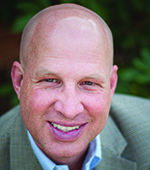By John Chandler
 Since 1840, global human life expectancy at birth has risen about three months with each passing year. A century ago, Americans were expected to live until age 47; now, newborns are pegged for 79 years. If life expectancy at birth in the United States continues to increase at its average historic rate, it will reach 100 by 2084.
Since 1840, global human life expectancy at birth has risen about three months with each passing year. A century ago, Americans were expected to live until age 47; now, newborns are pegged for 79 years. If life expectancy at birth in the United States continues to increase at its average historic rate, it will reach 100 by 2084.
Of course another world war, pandemic or medical breakthrough could skew the graph. But the aging of Baby Boomers has spawned a surge in what author Gregg Easterbrook calls “the new science of old age.” And, to the surprise of many, the possibility of many more gray people in the United States has a sunnier forecast than might be imagined. Could a world seven times more crowded than today be a place in which you would want your descendants to live? There are 43 million Americans today who are 65 or older. That number could reach 108 million by 2050. Easterbrook says, “That’s the equivalent of adding three more Floridas, inhabited entirely by seniors.” Does anyone want three more Floridas?
Want it or not, it very likely could be headed our way. While politicians posture about Social Security, and sandwich generation adults wonder if they will care for both children and parents into perpetuity, here are some of Easterbrook’s more hopeful trends accompanying the general graying of the American population:
• The transformation of university education beyond fresh-faced 18 year olds to include life-long learners.
• The decline of consumerism and materialism as the contentments of old age (and its relative prosperity) soothe the itches of acquisition.
• A less war-like planet and continuing decline of international per capita military spending.
• A rethinking of life and community around long-term friendships rather than the nuclear family and all-consuming and isolated child-rearing.
• The growth of warm-weather population centers.
• A renaissance for less loud and aggressive pastimes like baseball (hurray!) and theatergoing (meh).
Long ago, church thinkers like Charles Arn advised churches not to look for youth ministers, but instead to call ministers to “OPALs” — Older People with Active Lifestyles. If you want to go to where the people are going to be, plant that new work in a senior community.
Beyond that, though, a positive way Baptist communities could respond to the graying of America is to capitalize on the receptivity of the older to matters of wisdom and legacy. These things matter to people in the second half of life, and the church would be wise to learn to guide people in how to finish life well and pass along what can only be handed down from long experience. The church has a rich vocabulary of eternal life and fearlessness in the face of death. I hope we embrace the challenge of speaking well about these things as our communities age. If we can do that, there will be a sunny side to our gray forecast.
